
Grapes, celery and other low-calorie foods are sometimes said to be negative-calorie foods. A negative-calorie food is an item that provides fewer calories than your body uses to digest it. About 10 percent of your total daily energy expenditure goes to digest and store the nutrients in the food you eat, Dr. Donald Hensrud of the Mayo Clinic explains, but cautions that while it's "theoretically possible" that some foods are negative-calorie, scientific study hasn't confirmed this as of 2010. Hensrud concludes: "Many of the foods touted as negative-calorie foods are vegetables and fruits that can aid in losing weight as part of an overall healthy diet plan."
Fruits
The catabolic diet, which focuses on eating likely negative-calorie foods, divides these foods into two categories: high-grade catabolic and low-grade catabolic. High-grade catabolic foods will burn a larger portion of the calories found in the food. High-grade catabolic fruits include oranges, lemons, grapefruits, pineapples, tangerines, strawberries, plums and blackberries, according to the HealthRecipes website. Examples of low-grade catabolic fruits are grapes, nectarines and honeydew melon. Grapes are included in a group of fruits that work as catabolic foods when consumed raw.
Vegetables
HealthRecipes lists more than a dozen negative-calorie vegetables. Celery is a low-calorie food that is fat-free and low in sodium and cholesterol. One 4-inch stalk of celery contains about 1 calorie, which means your body will expend more calories during digestion than the stick provides. For example, a 5-calorie piece of celery may take 100 calories to digest — a net loss of 95 calories from your body fat, HealthRecipes calculates. Other examples of negative-calorie veggies include broccoli, carrots, chili peppers, lettuce, turnips, beets, green cabbage, cauliflower, cucumbers, garlic, onions, zucchini, artichokes and green beans.
Meats
A wide variety of seafood is considered high-grade catabolic foods, HealthRecipes explains, including white fish such as cod and flounder, tuna, sea bass, shrimp, clams, oysters, mussels and crabs. Avoid high-calorie additions such as tartar sauce, cocktail sauce and other dressings that will greatly increase the calorie content of your meal.
Negative-Calorie Examples
Spinach is nutrient-dense, low in calories and helps to keep you satiated. A large spinach salad — about 2 cups of spinach — will provide only 14 calories, far fewer than your body will burn digesting that amount, HealthRecipes calculates. On the other hand, if your favorite dessert is 2 cups of ice cream, packing 400 calories, and your body only burns 200 calories during digestion, you will have gained 200 calories. More than likely, your body will store this calorie surplus as fat.
Negative-Calorie Warnings
It's not healthy to build your diet completely on negative calorie foods, the Mayo Clinic's Hensrud cautions, as this may lead to malnutrition. Replace high-calorie foods in your diet with negative-calorie foods to enhance weight loss. Consult your doctor before beginning any new diet.
Related Articles

Calories in 1 Cup of Pasta Primavera

Nutrition Information on Blueberries
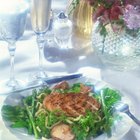
High Fiber & Protein Diet Menus
The Calories in Seafood Paella
Portillo's Chopped Salad Calories

Vitamins for Mental Alertness

Food Sources of Betaine
Calories in Vegetable Beef Soup

A List of Foods That Contain Choline
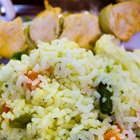
Steamed Vegetable Diet
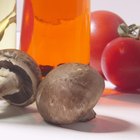
Mineral Oil Vs. Olive Oil

What Is the Michi Ladder Diet?
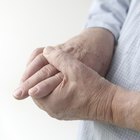
Foods to Avoid to Prevent Gout

Nutritional Value of Dehydrated Green ...
When to Eat & Exercise With P90X

How to Make Sacred Heart Diet Soup
Seafood Gumbo Calories
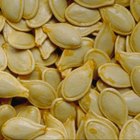
Alkaline & Acidic Foods & Drinks

Best Time to Take Vitamin B Complex
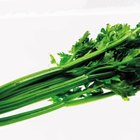
Can You Juice Celery Leaves?
References
Writer Bio
Dustin Bogle is an experienced personal trainer, group fitness instructor, nutritionist and fitness article writer. His articles have been featured in "Daily Press" newspaper and "Fresh Ink" newspaper.
Photo Credits
Lilli Day/Photodisc/Getty Images